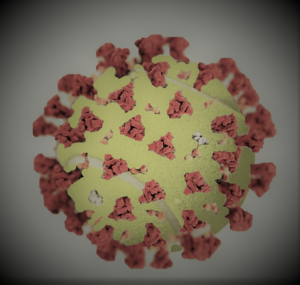From time to time I mention that my educational background and day job is in engineering. In fact, the tagline that use on twitter for @fiendatcourt is “This is what happens when the brain of an engineer collides with tennis.”
I don’t think it has come up before, but I also have an MBA. One of the side effects of that fact is that I occasionally geek out over financial data. I am particularly interested in how people and organizations respond to incentives. Today we are looking at an example of the most obvious incentive of all: Money.
Tennis Tournament Suspensions (and lack thereof) Under COVID-19
It is striking to step back and realize that only tennis tournament activity that is going on right now in my geographic region is under the banner of UTR and other events that are not sanctioned by the USTA. There is a very obvious explanation for this. At the onset of the COVID-19 crisis the USTA National Office suspended play tournaments as well as other events such as leagues and team tennis. UTR never suspended play.
While the national suspension of USTA tournaments was lifted June 1, the resumption of play for tournaments at the local level was delegated to the discretion of the USTA sections and local health authorities. My section, Texas, elected to first focus on play at the local level, in other words primarily leagues. The resumption of USTA tournaments in Texas is tentatively slated for July 1.
UTR tournaments were not impacted by the USTA suspension because they are not under USTA jurisdiction. I am not sure that everyone understands the relationship (or lack thereof) between these two organizations. Probably not everybody will appreciate my perspective on the unique characteristics that I have observed, but nevertheless I am pressing forward.
Question: Why did the USTA and UTR organizations respond differently to COVID-19?
On the surface, there is a great deal synergy between the objectives of the USTA and UTR. Both organizations have a stated and obvious interest in promoting tennis as a sport. This is reflected in the table below.
| USTA | UTR |
| The USTA is the national governing body for the sport of tennis and the leader in promoting and developing the sport’s growth on every level in the United States, from local communities to the crown jewel of the professional game, the US Open.[3] | Universal Tennis was founded in 2008 by a group of passionate tennis players and coaches with one goal in mind: to make tennis more affordable, accessible and fun for all players, regardless of age, gender, and socioeconomic status. [4] |
The USTA is a nonprofit corporation. This means that it is legally incorporated to further a cause rather than returning profit to it’s owners, shareholders, leaders, or members. The requirement for a nonprofit is to use surplus revenues to further the objective of the nonprofit.
On the other hand, UTR is a Limited Liability Company (LLC). It is essentially a privately held business that is structured to provides a corporate liability shield for the owners. UTR exists to earn money for the its owners and investors. To be clear, I am not saying that this is a bad thing. I am merely describing how UTR is structured.
Moving past the synergistic mission statements provided in the table above, the USTA has additional objectives that the UTR does not. To name a few, there is player development, US national teams, and that little event called the US Open. I am guessing that right now a lot of resources at the USTA are focused exclusively on figuring out a way to make the US Open happen this year.
The financial and legal structure of the organizations is the first clue that point in the direction of an answer to why the USTA suspended play and UTR did not. A second clue came in the only statement that UTR has published regarding COVID-19.
UTR Events are hosted by third-parties on our platform. As tennis events are postponed or cancelled worldwide, we would like to remind the UTR community that it is up to the individual discretion and judgment of tennis organizers and players to determine their level of comfort in participating, organizing or playing in any tennis event hosted via the UTR platform.
Official Universal Tennis Statement on COVID-19, March 13, 2020
The UTR LLC structure coupled with the statement above means that they are fairly well shielded from legal liability should a player or other participant claim to have been harmed from playing in a UTR event. More precisely, UTR events are owned and operated by third parties. UTR merely provides a platform for the data associated with that event.
Bottom Line
At the end of 2019, the USTA had total assets of almost 1.2 billion dollars including almost 16 million dollars in cash.
As an LLC, UTR is not required to disclose financial data. I don’t think I would be going out on a limb to say that the UTR assets are most likely significantly less than what the USTA has on the books. In fact, profits that UTR earns are probably being passed on to the owners and investors. There is nothing shady about that. It is what just an LLC is.
There is no reason for UTR to suspend play because that organization literally has nothing to lose. It is not the same for the USTA. That is why we can currently play UTR tournaments in Texas but not USTA. This will change in Texas on July 1 when USTA tournament play can resume.
At the local level, some UTR events were impacted. Some UTR tournaments in my area were cancelled because the host facility was shut down under municipal mandate. It also appears that some tournaments were not conducted because the third parties running those events thought it prudent.
At the same time, clearly some new UTR events were created and conducted post COVID-19. When an event has “Social Distancing” in the title, that is a pretty good indication that it was recently conceptualized and created.
The fact that UTR continued events and USTA did not comes down to different risk calculations from the two organizations. However the differentiating variable in that risk calculation was most likely driven by financials rather than any deep insight or alternate perspectives on the health data.
While my recent tournament history is mostly USTA, I have played a few UTR tournaments and absolutely loved the “UTR powered” events. I am sure that I will be increasing my UTR participation following the back end of COVID-19, but that comes more from me rethinking my tennis calendar overall which is a thread for another day.
- “USTA COVID-19 Updates,” https://www.usta.com/en/home/usta-covid-19-updates.html, viewed June 7, 2020.
- “Texas COVID-19 Updates,” https://www.usta.com/en/home/stay-current/texas/texas-covid-19-update.html, viewed June 7, 2020.
- “How the USTA Works for You,” https://www.usta.com/en/home/about-usta/who-we-are/national/how-the-usta-works-for-you.html, viewed June 7, 2020.
- “History,” https://www.myutr.com/about, viewed June 7, 2020.
- “United States Tennis Association Incorporated and Affiliates, Consolidated Financial Statements Years Ended December 31, 2019 and 2018.”
- “Universal Tennis Rating (UTR) History, http://cummingsathletics.com/cummings/universal-tennis-rating-utr-history, viewed June 7, 2020.
- “Official Universal Tennis Statement on COVID-19”, https://blog.universaltennis.com/2020/03/13/official-universal-tennis-statement-on-covid-19, published March 13, 2020. Viewed June 6, 2020.



